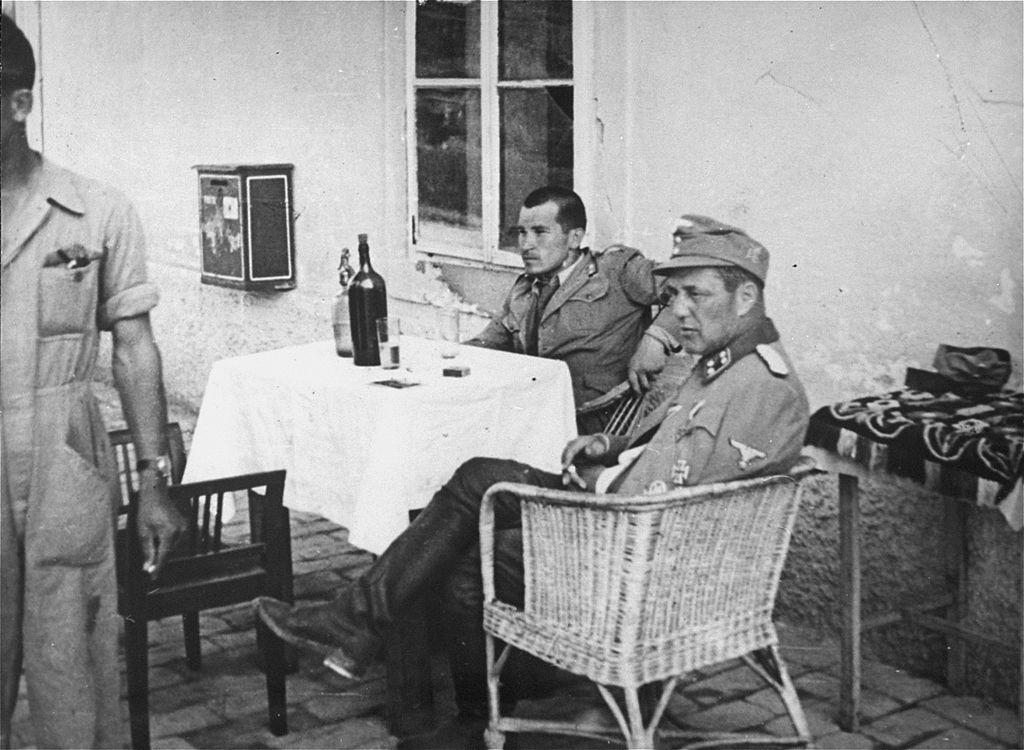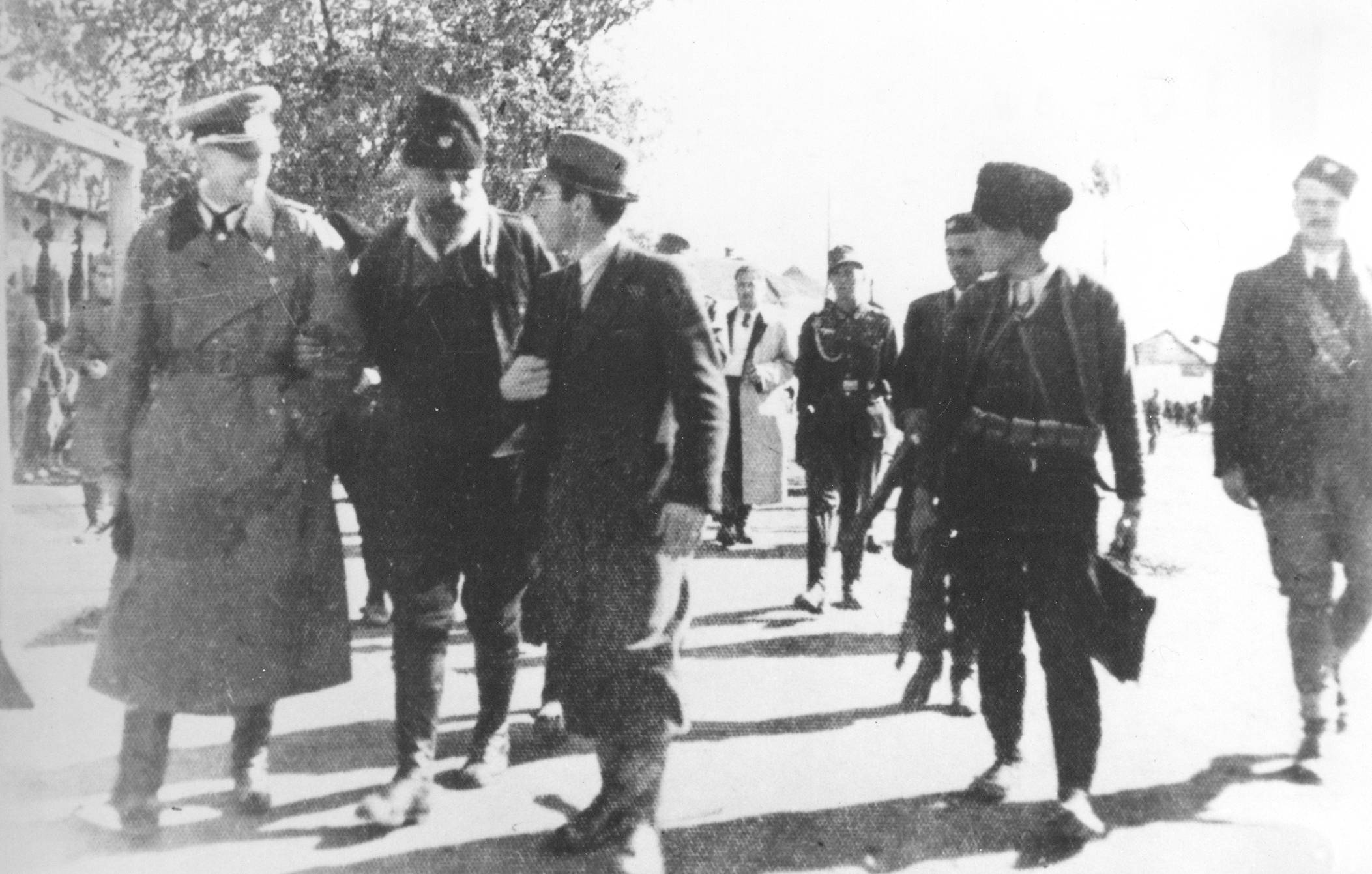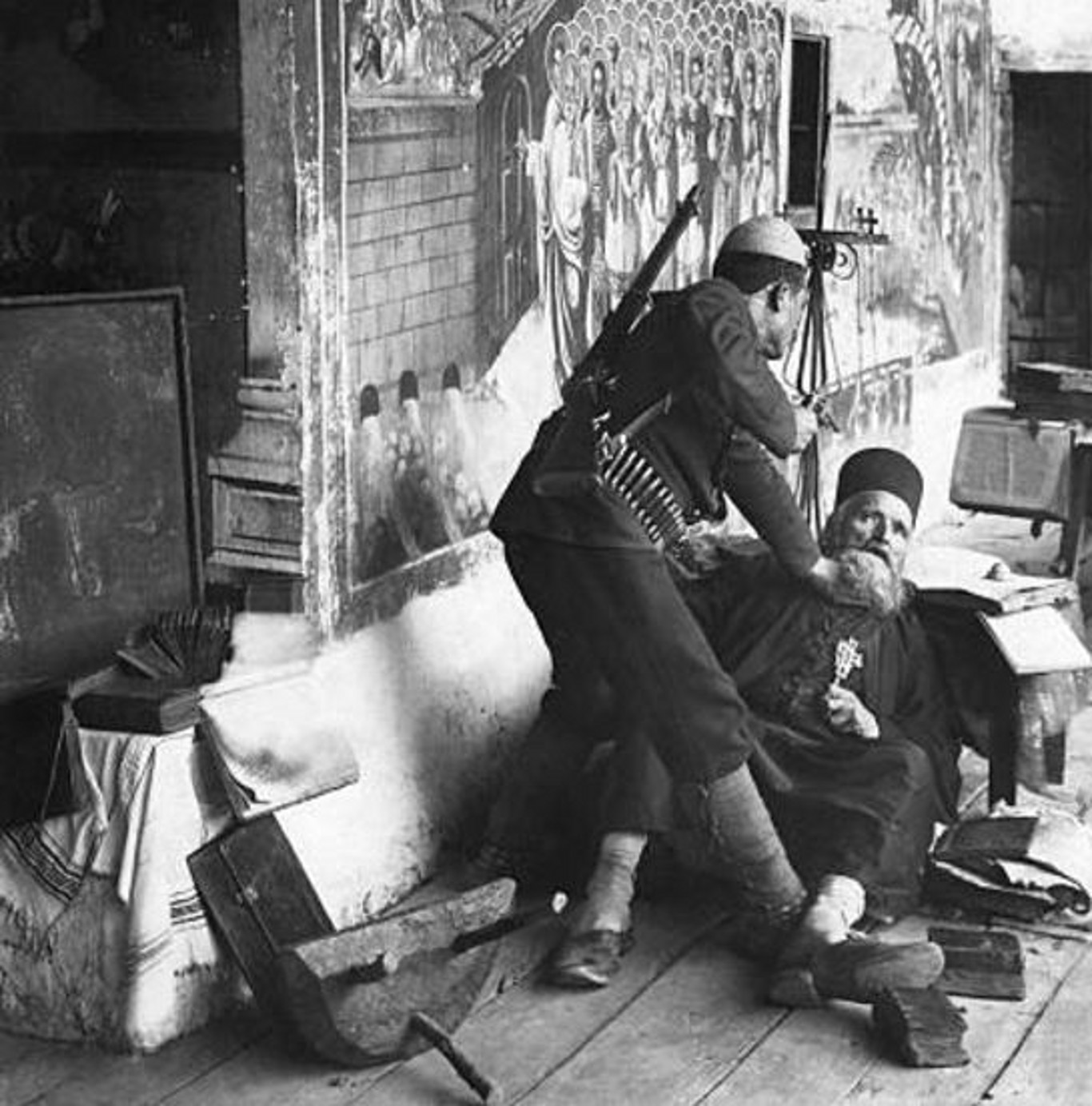Thought this might be a interesting topic. The Axis powers in Yugoslavia relied on collaborationist units to help maintain their hold in the region and suppress revolts, what are some of the less well known forces besides for the ustase militia units that Sparty mentioned?
You have lucky since I was just writing a new post for happenings in Yugoslavia for the August of 1941 in this post where I will try to describe more details about it on the timeline as well:
Since whole Yugoslavia was total mess during the WW2 I will try to explain based on this:
- Ustashe were not typical collaboration forces since they got their own country (they were Nazi allies and base their ideology on the Nazi doctrines but can not count them as collaborators since they had their own politics, army, troops and on the end country). In another word Ustashe become “regular” in most cases fully independent from German and Italian orders inside of the Independent State of Croatia (with exceptions of some inspections and observatory forces from the side of Germans (mostly) and Italian troops in the specific areas of their interest (those areas controlled by Italians will be extended in the future months due to the tens of thousands Serbian civilians running for their lives on the territory with Italian patrols control). Italians will even try to protect some group of Serbian civilians that were near warning the Ustasha that they will start fighting if they cross marked lines. Later how the war was progressing some Ustashe units (not all) will collaborate with local Serbian Chetnik units (not all) and Italians (not all) due to the common interest to keep civilians in peace in areas they agreed for non-attacking zones and common fights against communists. Later in the war Croats will send huge group of young Ustashe forces to fight side by side with the Germans on the Eastern Front where most of them will be killed especially near the Stalingrad. Ustashe in some areas even cooperate with different local communists to secure their own position or local Croats who are living there. Anyway most horrific crimes will be made in the Jasenovac Camp which was a real killing factory and Ustashe who would work there would be described as “cult of blood followers” more then a real troops.
On the picture: Ustasha leader Maks Luburić (concentration camp mastermind in Independent State of Croatia) together with German officer at Stara Gradiška concentration camp.

- Chetniks of Kosta Pećanac in Serbia (not to be confused with Chetniks of Draža Mihailović since they even had clashes between them). Kosta Pećanac was WW1 and Balkan Wars veteran and was one of the two Toplica Uprising leaders back in the WW1 against Bulgarians. There is a good episode called Toplica Uprising in The Great War Serial where you can actually see him. During the Nazi invasion of Serbia in April he get direct order from Yugoslavian government to focus fighting with his units in the area of South Serbia and try to stop advances of Bulgarians and Germans-Albanian troops in the mountains, small places, forests and hills. His Chetnik forces were not small, especially in the first couple of months during and after the invasion and probably fact that many skip to mention is that in July 1941 Pećanac Chetniks had more rebels then Draža Mihailović Montain Detachment (Royalist Chetniks) and Tito Communists all together. April, May, June and bit of July his troops will avoid German troops and sporadically battle Bulgarian and Albanian official and unoffical units in multiple villages where Serbs were living in the South. However not long time passed and Pećanac sent his spies in Belgrade who afterwords connected him with Gestapo and secret Nazi spies for the Balkans that will afterwords had direct meeting with him. Also many Chetniks and Partisans claim that he had direct meeting with Draža Mihailović in July already but it turns out that they have totally different views on the current situationa and who should lead revolution. Pećanac was also older and more known but Mihailović although also passed whole WW1 had continue his military education and after the WW1. Long story short Pećanac will first make proclamation in the summer of 1941 that his units will be placed under direct control of the Serbian puppet goverment in Belgrade and will get orders from the German troops in Serbia only. After this but as well before that many Chetniks will leave Pećanac and go either to Partisans or to Chetniks of Draža Mihailović, his units will from couple of thousands in the invasion start fell down to only couple of hundreds bad equip and bad trained locals with point of their existence to fight the Communists and Partisans but also making mess around civilians. The Germans will call this small group of Pećanac Chetniks in multiple reports as “an incompetent drunken gangs” who will afterwords be responsible for many different massacres in that areas against Communists, Bulgarians, local Serbian civilians, Bosnian Muslims and Albanians. Pećanac Chetniks were forbidden by the Germans after multiple reports on their robbing, killing and brutality on the locals while Pećanac will be marked as Serbian people “traitor” from the both Draža Mihailović Chetniks and Tito Partisans. He will be killed afterwords by the spies sent on the order of Draža Mihailović to eliminate him (but about this more in a timeline since he had very interesting life and views during the war).
On the picture: Kosta Pećanac (in the middle) and Xhafer Deva (Albanian Collaborator) with a German officer representative and associates after signing the contract for “peace” between them in Podujevo.

- SS Handschar Divison was created from Bosnian Muslims (mostly but with Albanian units too) and was very unique in that way since the Himler personally insisted on the formation of this Division directly to Hitler. Himler had a dream to create such a thing based on the stories how Muslims were well fighting during the WW1 in the Austro-Hungarian army. Reasons for creating of this division were many but mostly based on a bad reputation which Ustashe in Independent State of Croatia leaved to the local Muslim population not protecting them from the constant Chetniks and Partisans attacks and even killing those who not agreed with Croatian Independent state. From the beginning, it was clear that there would be problems with this division, because at one point, a rebellion even broke out during 1943 inside of their troops where part of the rebels were killed afterwords. This division will be sent to combats against Partisans but will be widely spread in different areas of Independent Croatian territory and will take active battles against Partisans (mostly) and Red Army in 1944/45 where they create massacres in different Srem villages killing, burning and looting whole place population of the area where they arrived on the similar way as Ustashe did just in a much smaller scale. On the end of the war many members had deserted or captured, many were killed in action while some switched sides to Partisans and some went home (after being prosecuted but lot of them get out without any punishment).
*On the picture: Recruits of SS Handschar Divison during their education process training in 1943 reading a propaganda paper on “Islam and Judaism” *

- SS Skenderbeg Divison which was similar to the first one and actually was born from the SS Handschar Divison with exception that division was created mostly from the Albanian Muslims in 1944 and will be very active in Kosovo. Albanians in general were already sided to Italians/Germans where they were actively fighting Serbian Chetniks and Communist Partisans especially in Montenegro, on Kosovo and territory of South Serbia. They will be included in multiple German actions against the rebels around Yugoslavia while Albanians from Kosovo would be usually pro-Nazi oriented giving the many units already during and after the Yugoslavian invasion in April 1941. In some parts like south of Serbia they will fight and then make certain deals with local Serbian Chetniks troops of Pećanac and Bulgarians while they will cooperate directly with the Nazis in some other areas against other troops. Most of those who already fought until the 1944 will be now included in the newly formed Skenderbeg Divison making various crimes before and after joining division with focus on communists, local Serbian civilians, Serbian churches and Chetniks in different areas forcing many Serbian locals into exile from Kosovo and killing many others on horrific ways by using village tools for torturing etc. They were also hunting Albanians who joind Partisans and are mostly organized to protect important trading hubs in area populated by Albanians. They did a last stand on the Kosovo fighting the incoming Partisans offensive and aided German troops retreat from the Balkans in 1944.
*On the picture: Shown Albanian paramilitary Nazi killing the Serbian monk Damaskin from Devič Monastery in Kosovo (Devich). The 15th century monastery was afterwords looted and burned.

There is of course much more local and important collaborators but those above were among the most known. There are many arguing about Chentniks od Draža Mihailović and Partisans collaborations with Germans / Italians as well the puppet governments with local militias about which I will try to describe more in my following post. Collaboration of Puppet Governments, Chetniks of Draža Mihailović and in some places Partisans deserve full post for itself with differences and areas showing with the situation description of the places.